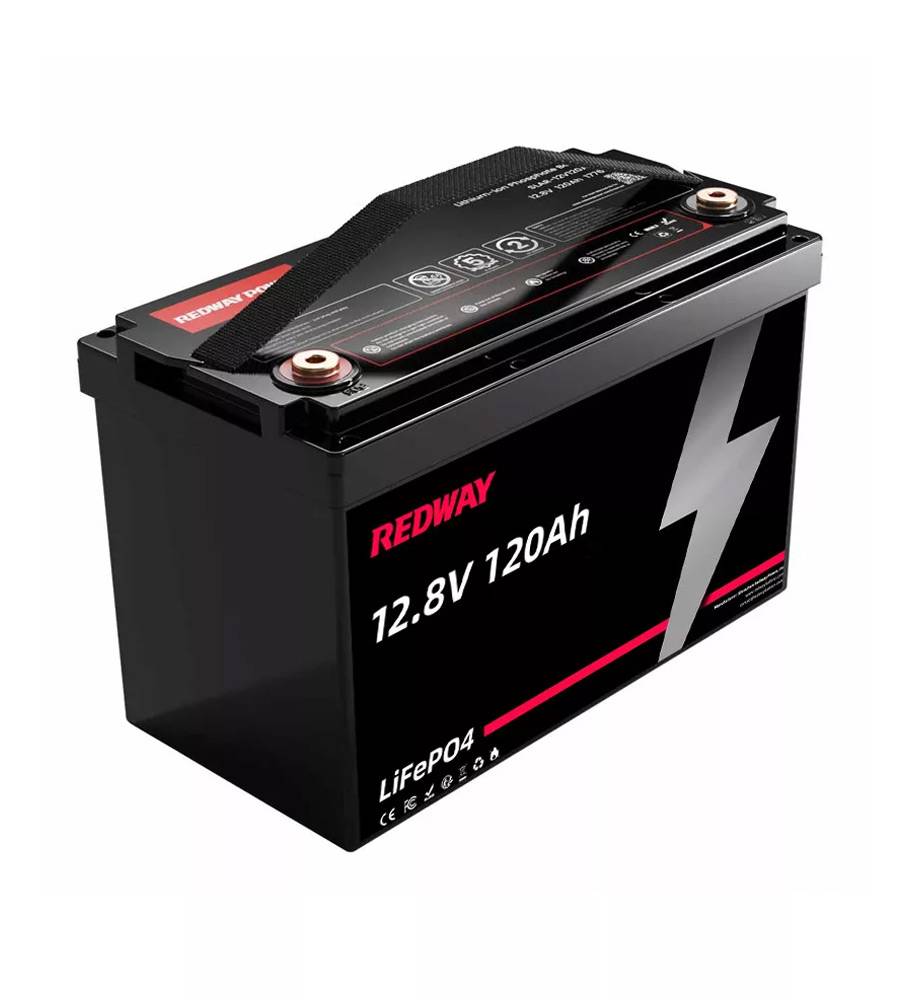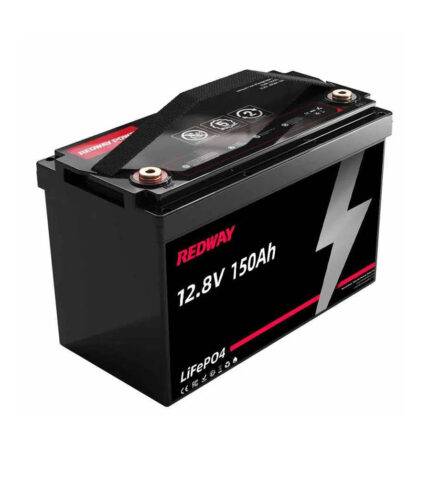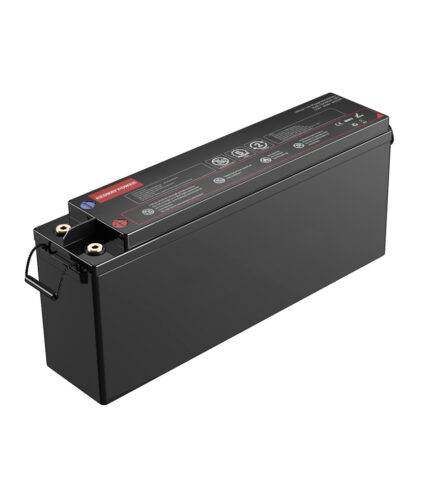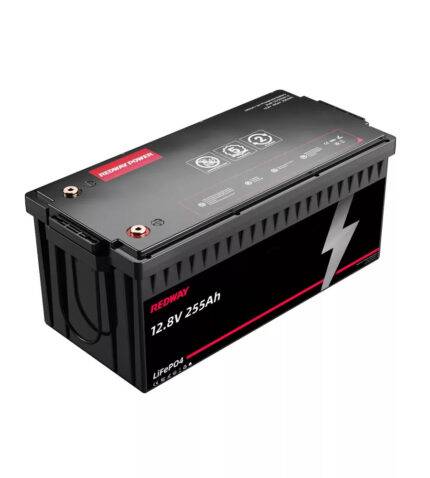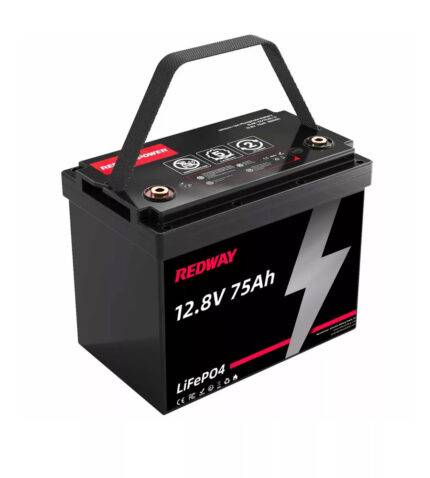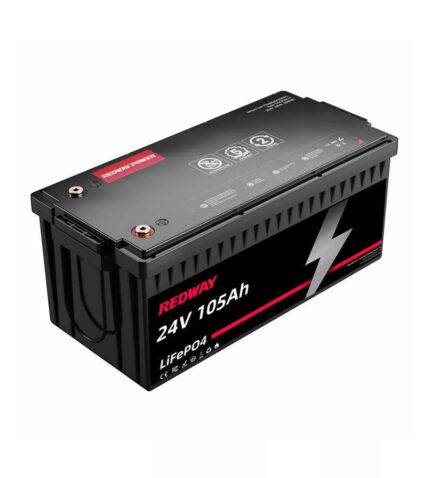- Forklift Lithium Battery
-
48V
- 48V 210Ah
- 48V 300Ah
- 48V 420Ah (949 x 349 x 569 mm)
- 48V 420Ah (950 x 421 x 450 mm)
- 48V 456Ah
- 48V 460Ah (830 x 630 x 590 mm)
- 48V 460Ah (950 x 421 x 450 mm)
- 48V 460Ah (800 x 630 x 600 mm)
- 48V 460Ah (820 x 660 x 470 mm)
- 48V 500Ah
- 48V 560Ah (810 x 630 x 600 mm)
- 48V 560Ah (950 x 592 x 450 mm)
- 48V 600Ah
- 48V 630Ah
-
48V
- Lithium Golf Cart Battery
- 12V Lithium Battery
12V 150Ah Lithium RV Battery
Bluetooth App | BCI Group 31
LiFePO4 Lithium
Discharge Temperature -20°C ~ 65°C
Fast Charger 14.6V 50A
Solar MPPT Charging - 24V Lithium Battery
- 36V Lithium Battery
- 48V Lithium Battery
-
48V LiFePO4 Battery
- 48V 50Ah
- 48V 50Ah (for Golf Carts)
- 48V 60Ah (8D)
- 48V 100Ah (8D)
- 48V 100Ah
- 48V 100Ah (Discharge 100A for Golf Carts)
- 48V 100Ah (Discharge 150A for Golf Carts)
- 48V 100Ah (Discharge 200A for Golf Carts)
- 48V 150Ah (for Golf Carts)
- 48V 160Ah (Discharge 100A for Golf Carts)
- 48V 160Ah (Discharge 160A for Golf Carts)
-
48V LiFePO4 Battery
- 60V Lithium Battery
-
60V LiFePO4 Battery
- 60V 20Ah
- 60V 30Ah
- 60V 50Ah
- 60V 50Ah (Small Size / Side Terminal)
- 60V 100Ah (for Electric Motocycle, Electric Scooter, LSV, AGV)
- 60V 100Ah (for Forklift, AGV, Electric Scooter, Sweeper)
- 60V 150Ah (E-Motocycle / E-Scooter / E-Tricycle / Tour LSV)
- 60V 200Ah (for Forklift, AGV, Electric Scooter, Sweeper)
-
60V LiFePO4 Battery
- 72V~96V Lithium Battery
- Rack-mounted Lithium Battery
- E-Bike Battery
- All-in-One Home-ESS
- Wall-mount Battery ESS
-
Home-ESS Lithium Battery PowerWall
- 24V 100Ah 2.4kWh PW24100-S PowerWall
- 48V 50Ah 2.4kWh PW4850-S PowerWall
- 48V 50Ah 2.56kWh PW5150-S PowerWall
- 48V 100Ah 5.12kWh PW51100-F PowerWall (IP65)
- 48V 100Ah 5.12kWh PW51100-S PowerWall
- 48V 100Ah 5.12kWh PW51100-H PowerWall
- 48V 200Ah 10kWh PW51200-H PowerWall
- 48V 300Ah 15kWh PW51300-H PowerWall
PowerWall 51.2V 100Ah LiFePO4 Lithium Battery
Highly popular in Asia and Eastern Europe.
CE Certification | Home-ESS -
Home-ESS Lithium Battery PowerWall
- Portable Power Stations
12V 120Ah Lithium Battery (Group 31)
• Cell: LiFePO4
• MOQ: 50
• Delivery: 20 Days
• Customizable / OEM / ODM: Yes
• Factory: Redway, Dongguan, Guangdong, China
• Delivery Terms: FOB, EXW, CIF
• Payment: T/T, L/C, PayPal
• Sea / Air / Land Shipment: 10FT, 20FT, 40FT, 60FT
Description
The 12V 120Ah Lithium Battery (Group 31) from Redway Power is a high-capacity energy solution designed for various applications. Utilizing LiFePO4 technology, this battery delivers a nominal energy output of 1536Wh and features a durable design for long-lasting performance. Ideal for OEM/ODM and wholesale buyers, it offers customization options and reliable power storage.
Key Features:
- High Energy Capacity: Provides a nominal capacity of 120Ah, delivering 1536Wh of energy, perfect for RVs, marine applications, and off-grid systems.
- Extended Cycle Life: Designed for over 6000 cycles at 80% Depth of Discharge (DOD), ensuring exceptional longevity and cost-effectiveness.
- Built-in Battery Management System (BMS): Equipped with an intelligent BMS that protects against overcharging, over-discharging, and temperature extremes for enhanced safety.
- Versatile Operating Conditions: Operates efficiently in temperatures ranging from -20°C to 65°C, making it suitable for various environments.
- Compact and Lightweight Design: With dimensions of 330 x 172 x 215 mm and a weight of approximately 10 kg, this battery is easy to install and transport.
Product Description:
Introducing the 12V 120Ah Lithium Battery (Group 31), a versatile power solution engineered for demanding applications. This battery utilizes advanced LiFePO4 technology, featuring a nominal voltage of 12.8V and an impressive energy capacity of 1536Wh, making it ideal for RVs, marine use, and off-grid setups.
Designed to perform efficiently in diverse conditions, it can be charged in temperatures from 0°C to 60°C and discharged between -20°C and 65°C. Its self-discharge rate is maintained at just 1.5% per month, allowing for extended storage without loss of capacity.
With maximum continuous charge and discharge currents of 100A, this battery can handle significant power demands effectively. The durable ABS casing provides fire-resistant protection while ensuring the battery’s longevity.
For OEM/ODM clients, we offer extensive customization options, including silk-screen labeling and user manuals. Our flexible delivery terms (FOB, EXW, CIF) ensure that your orders are processed promptly within 20 days.
Choose the Redway Power 12V 120Ah Lithium Battery (Group 31) for unmatched performance, reliability, and smart technology in your energy storage solutions. Elevate your power capabilities with our trusted batteries—your journey towards efficient energy starts here!
Specifications
Download 12V 120Ah Group 31 Datasheet
Note: Our products are customizable, allowing customers to modify the main data according to their requirements.
| 12V120Ah | Specifications |
|---|---|
| Cell Type | LiFePO4 (LFP) |
| Nominal Voltage | 12.8V |
| Nominal Capacity | 120Ah |
| Nominal Energy | 1536Wh |
| Max Charge Voltage | 14.6V |
| Discharge Cut-off Voltage | 10V |
| Max Continues Charge Current | 100A |
| Max Continues Discharge Current | 100A |
| Dimensions [L x W x H] | 330 x 172 x 215 mm (13 x 6.8 x 8.4 inches) Group 31 |
| Weight | ~10 kg |
| IP Rating | IP65 |
| Internal Series / Parallel | 4S8P |
| Max Parallel | 4 |
| Internal Resistance | ≤10mΩ |
| Cycle Life | >6000 cycles (DOD 80%) |
| Self-Discharge | 1.5% (Per month) |
| Charge Temperature | 0°C ~ 60°C |
| Discharge Temperature | -20°C ~ 65°C |
| Optional Upgrades | Self-heating / Bluetooth / App / WiFi / 4G / GPS / LCD display / RS485 / RS232 / CAN-bus / Solar Panel / Solar MPPT / etc. |
| Charger | Optional |
| BMS | Overcharge / Over voltage / Over current / Overload / Overheat / Low temperature / Low voltage / Short circuit / etc. |
| Terminal | M8 |
| Battery Shell | ABS |
| Warranty | 5 Years |
| Silkscreen / Label / Laser Logo | Yes |
| User Manual | Yes |
| Customization / OEM / ODM | Yes |
| Shipment | Yes |
| Certifications | UL 1642, IEC 62619, IEC 62133, CE, RoHS, MSDS, UN38.3 |
Applications and FAQs
What shortens the life of lithium batteries?
Factors that shorten the life of lithium batteries include excessive heat, overcharging, deep discharging below recommended voltage levels, high discharge rates, and using low-quality chargers. Maintaining optimal charging practices and temperature control can significantly extend their lifespan.
How do you calculate how long a lithium battery will last?
To calculate how long a lithium battery will last, use the formula:
Runtime hours =Battery Capacity Ah / Load Current A
For example, a 100Ah battery powering a 20A load would last:
Runtime=100/20=5 hours
What is a 120Ah lithium battery equivalent to?
A 120Ah lithium battery is equivalent to approximately 1440 watt-hours (Wh) when calculated at a nominal voltage of 12V (i.e., 120Ah×12V120Ah×12V). This capacity indicates how much energy the battery can store and deliver to devices.
Will a 200W solar panel charge a 120Ah battery?
Yes, a 200W solar panel can charge a 120Ah battery, but charging time will vary based on sunlight conditions and efficiency. Under ideal conditions, it may take around 8-10 hours to fully charge the battery from a partial state of charge.
What is the difference between a 100Ah and a 120Ah battery?
The primary difference between a 100Ah and a 120Ah battery is their capacity. A 120Ah battery can store more energy and provide power for longer periods compared to a 100Ah battery, making it more suitable for higher energy demands.
Do I need a special inverter for a lithium battery?
Yes, using a specialized inverter designed for lithium batteries is recommended. These inverters ensure compatibility with lithium technology, managing voltage and current levels effectively to prevent overcharging and ensure safe operation.
How many solar panels does it take to make 100 amps?
To generate 100 amps, the number of solar panels required depends on their wattage. For example, using 300W panels, you would need about 4 panels under optimal conditions (assuming about 5 peak sunlight hours). Each panel would produce around 25 amps per hour.
Is a 24 volt solar system better than a 12 volt system?
A 24-volt solar system is generally considered better than a 12-volt system for larger installations. It reduces current flow, which minimizes losses in wiring over longer distances, allowing for more efficient energy transfer and potentially lower gauge wire requirements.
What happens if your charger controller is too small in amps compared to the solar panels?
If your charge controller's amp rating is too small compared to your solar panels, it may overheat and fail to handle the excess current. This can lead to inefficient charging or damage to both the controller and the connected batteries.
What are Group 31 batteries?
Group 31 batteries are lead-acid batteries commonly used in marine, RV, and commercial applications. They typically have dimensions of approximately 13 x 6.8 x 9.5 inches and offer high capacity (usually between 70-130 Ah) suitable for deep cycling.
What is the difference between Group 31 and 34 batteries?
The primary difference between Group 31 and Group 34 batteries lies in their size and capacity. Group 31 batteries are larger with higher capacity (typically up to 130 Ah), while Group 34 batteries are smaller with capacities around 50-75 Ah, making them suitable for different applications.
What is a Group 31 battery used for?
Group 31 batteries are commonly used in applications requiring reliable power sources, such as marine vessels, RVs, commercial trucks, and heavy equipment. Their design allows for deep cycling capabilities, making them ideal for extended use.
How do you test a Group 31 battery?
To test a Group 31 battery, use a multimeter to check its voltage. A fully charged battery should read around 12.6V or higher. Additionally, perform a load test using a load tester to determine if it can maintain voltage under load conditions.
What do group numbers mean on batteries?
Group numbers on batteries indicate their physical size and terminal configuration according to industry standards. These numbers help ensure compatibility with specific applications and mounting systems while providing information about capacity and performance characteristics.
How many cycles do lithium-ion batteries last?
Lithium-ion batteries typically last between 500 to 2,000 cycles, depending on usage conditions, depth of discharge, and maintenance practices. Higher-quality cells can achieve even more cycles with proper care.
What does group mean on a lithium battery?
In the context of lithium batteries, "group" refers to the classification based on physical size and terminal configuration similar to lead-acid batteries. This classification helps users select compatible batteries for specific applications or systems.
Does group size matter when buying a battery?
Yes, group size matters when buying a battery as it determines compatibility with your device or vehicle's mounting space and electrical connections. Choosing the correct group size ensures proper fitment and performance in your application.
What's the difference between a lithium battery and a lithium-ion battery?
The term "lithium battery" generally refers to non-rechargeable lithium metal batteries, while "lithium-ion" specifically denotes rechargeable batteries that use lithium ions as charge carriers. Lithium-ion batteries are more commonly used in portable electronics due to their rechargeability and higher energy density.














